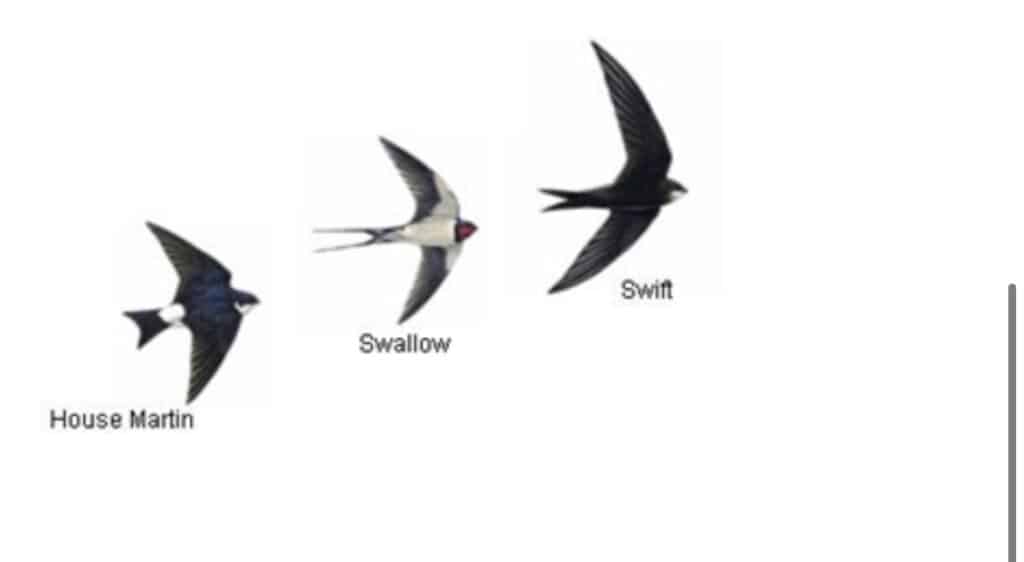Nesting in the eaves of our buildings and other small gaps in our homes, Swifts make the return journey from sub-Saharan Africa each year to breed in Dorset and the wider UK.
Greg Lambe, Vice Chairman of Christchurch Harbour Ornithological Group (CHOG), tells us that these “enigmatic birds which are the fastest bird in level flight, who eat, drink, sleep and mate on the wing, not touching the ground, need our help”. Additionally, he adds that the “UK population of Swifts has fallen alarmingly, that in just 20 years more than half of these birds have disappeared. This terrible population declineis mirrored in the Dorset area!”.
An important contributing factor to this decline is the loss of nest sites on our buildings. This is due to changes in the way we build and maintain our houses and other suitable nest site structures. “Whereas Swifts were previously able to find a crack or a hole to get into and build a nest, many of these access points have disappeared”, Paul Morton from Birds of Poole Harbour (BoPH) says. George Green from Dorset Bird Club (DBC) states that because of this, “as Swifts return from Africa to the same spot each year, many discover that their nest site is no longer there, and being loyal to their traditional nest sites, they are not able to breed and our Swift population declines further.”
To help reverse this trend local conservation groups CHOG, BoPH and DBC, are asking for the public’s help. They would like Bournemouth, Christchurch, Poole and the wider Dorset residents to report Swift sightings. In particular they are interested to know:
– Where groups of Swifts are flying at speed around roof height, often calling out loudly, as this means they’re likely breeding nearby
– Swifts entering holes and gaps in buildings as this is evidence of a nest or nesting attempt (Swift nests cannot be seen on the outside of a building unlike Swallows and House Martins)
– The numbers of Swifts seen at any one time
The groups would prefer not to have reports of Swifts flying high in the sky, feeding over water or fields, or away from settlements as these birds could have travelled long distances and may not be local breeding birds.

The best time to look for nesting swifts is from late May to late July, around dusk on a warm still evening or early in the morning. All that participants need to do is to look out of their window, go into their garden, or take a walk and look for Swifts displaying the above behaviours.
By reporting these sightings participants will help to build a picture of where current swift nest sites need to be protected and where it would be best to provide new nest sites in the future.
If you would like to play an active role in helping to reverse the decline of Swifts in Dorset, please report your sightings including your name, the road name, and postcode of where you saw the Swifts to one of the following:
East of the line from Bournemouth Pier to Bournemouth Airport, inform Swifts@chog.org.uk
West of the line from Bournemouth Pier to Bournemouth Airport inform, info@birdsofpooleharbour.co.uk
For Dorset outside of the Bournemouth, Christchurch and Poole area inform, dorsetbirdclub@hotmail.com
Join us in helping to bring reality and decency back by SUBSCRIBING to our Youtube channel:
https://www.youtube.com/channel/UCQ1Ll1ylCg8U19AhNl-NoTg
and SUPPORTING US where you can: Award Winning Independent Citizen Media Needs Your Help. PLEASE SUPPORT US FOR JUST £2 A MONTH







